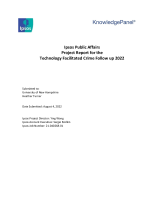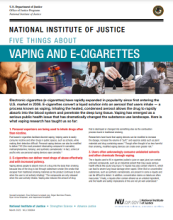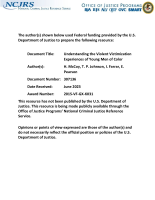Identifying as a Troublemaker/Partier: The Influence of Parental Incarceration and Emotional Independence
Journal
Journal of Child and Family Studies
Date Published
2020
Agencies
NIJ-Sponsored
Publication Type
Research (Applied/Empirical)





